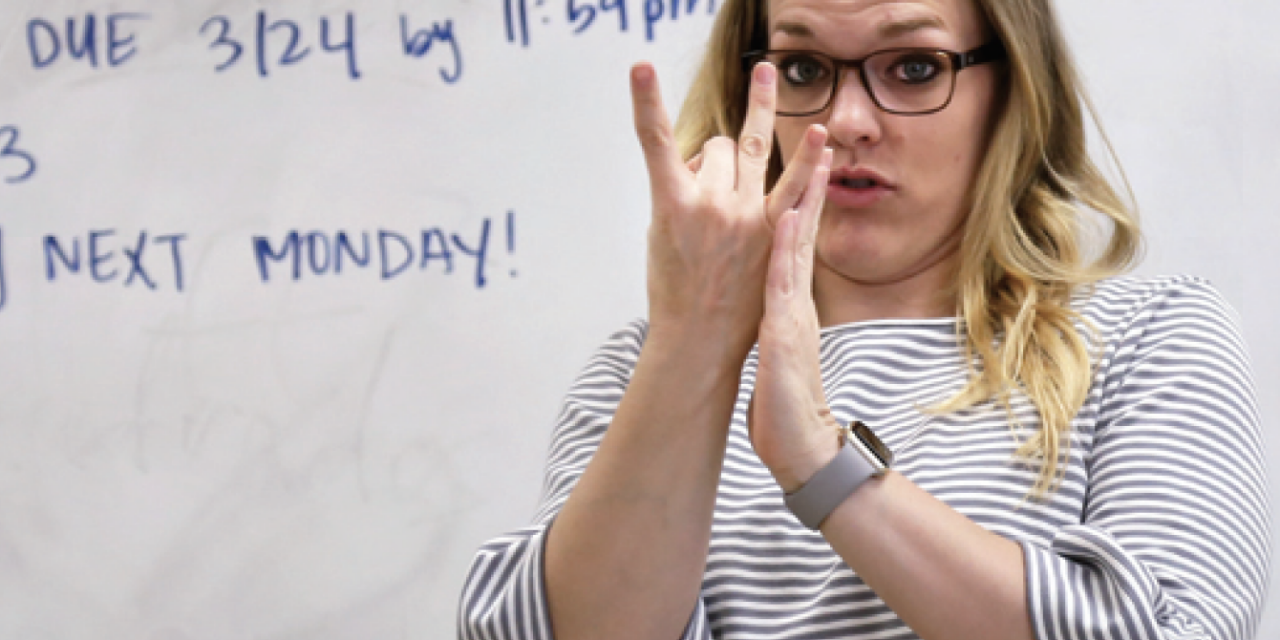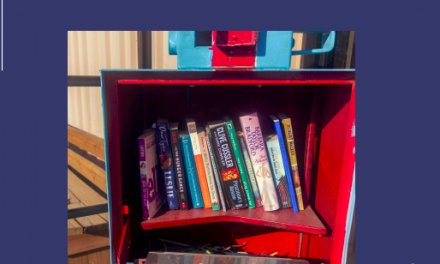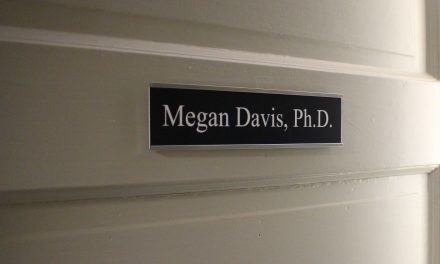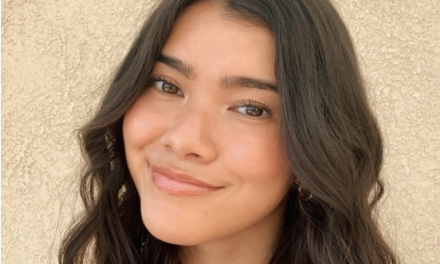STORY BY
Rebecca Rakowitz
PHOTOS BY
Nicole Rodriguez
DESIGN BY
Tanner Fant
Author’s note: Kent Schafer chose not to be interviewed in person. It wasn’t for a lack of time or feelings of shyness, but rather a desire to take control of his own voice. And so, I interviewed Schafer via email. A doctoral student studying psychology and the only culturally Deaf student at The University of Alabama, Schafer is pushing the university to increase their accessibility and understanding of Deafness. And he is not the only one.
Kent Schafer often wanders around campus with his phone pulled open to a scholarly journal. His peers shuffle along in a world of noise as Schafer navigates his world of sight. He is constantly scanning structures and signage, working to locate things on his own. When that doesn’t work, Schafer closes the journal and opens his phone’s notepad.
Notepads are the perfect canvas for Schafer to ask for directions or place a food order at the Ferguson Student Center, just as emails are the perfect canvas for Schafer to explain to me that nothing about using a notepad is perfect at all. Typing adds an additional emotional and cognitive load, and requires Schafer to use English, which has a different grammatical structure than American sign language and is therefore his second language.
But at least his message isn’t coming from a second person.
Schafer uses an interpreter in his classes, and they give him access not only to what is being said, but how it is being said, in terms of tone and prosody. When used in conjunction with captioning – which is especially helpful when lectures involve extensive jargon – interpreters are an incredible help.

UA PhD candidate Kent Schaefer during his presentation at Tide Talks.the theme remains the same: using mediation for crossing the language divide.”
But interpreting is an art, not a science.
“Consider an interpreter as an artist painting broad brush strokes,” Schafer said. “Every painting will turn out different, but the theme remains the same: using mediation for crossing the language divide.”
So we emailed in order to provide Schafer the opportunity to outline his thoughts in fine strokes, or as fine as can be over email: because email isn’t always conducive to follow-up questions, and meaning can be lost without face-to-face communication. Perhaps Schafer’s voice was still lost in the shuffle.
As the only student on campus who natively speaks American Sign Language, that can happen.
Tucked away in a fourth-floor office of Reese Phifer Hall sits an ally in Schafer’s fight for accessibility. Hanging on his wall is a proud degree in Deafness studies, and on his desk sits the schedule and syllabus for his class; Language, Communication, & Culture of the Deaf. Dr. Darrin Griffin has spent the recent years of his life looking at Deafness through the lens of academia, but before he learned about Deafness from professors at The University of Texas, Griffin learned about it from his parents in his Austin home. For Griffin, a Child of Deaf Adults (CODA) and advocate for the Deaf, Deafness is more than academic- it’s personal. He is assisting efforts to increase diversity and accessibility on campus because he sees that Schafer is the only Deaf student on campus not by chance, but by virtue of the system.
“[There are no Deaf undergraduate students] because we are not an open and welcoming and accessible campus,” Griffin said. “… You can’t be accessible to people if you don’t know they exist or don’t know their needs. We do not know the needs of the culturally Deaf … or of the Deaf student.”
For one young woman, this had to change. Ally Mitchell, a now-graduated Honors College student, had been exposed to Deaf culture in her hometown and was shocked by the lack thereof in Tuscaloosa. With a passion for accessibility and a desire to shift the understanding of Deafness on campus, Mitchell decided to start Deaf Hands Speak (DHS). She teamed up with a fitting faculty adviser, Darrin Griffin, and some like-minded Honors College peers to execute the organization’s mission of supporting and studying Deaf culture and American sign language, or ASL. Mitchell is now seeking approval for a University grant to study Deaf culture in Asia.
“My biggest hope was that more students get involved and get passionate about [Deafness] too,” Mitchell said. “The three prominent leaders [of DHS], me, Delphanie, and Darrin, all had slightly different goals and visions for what the group would do, but they all kind of melded. Getting [the ASL class] was a big goal of Delphanie’s.”
Delphanie Wu, a former member and eventual two-time president of DHS, now walks the campus of Vanderbilt University. Pursuing a degree in audiology, she hopes to one day change the way her field of study looks at Deafness. But several years ago, she walked the campus of The University of Alabama as an Honors College student who knew the Capstone could be so much more than it was, if only it offered ASL.
ASL is a historically suppressed visual language, rejected from Deaf and hearing schools alike due to the hearing world’s preference for oralism. For much of its history, The University of Alabama was one of those schools, not offering ASL to the student body. That was until a group of Honors students in DHS decided the absence of ASL was not only a detriment to current students, but a deterrent to future ones.
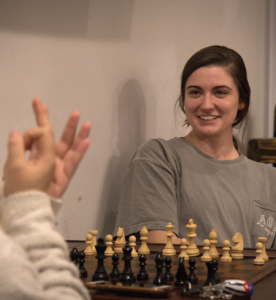
Students practice ASL at Deaf Coffee, a Deaf Hands Speak event that
allows students to sign over a warm cup of coffee.
“Students may not come to this school and go to Auburn because Auburn has ASL and we don’t,” Griffin said. “Those students want to study Deafness and Deaf culture and they’re like, ‘You guys don’t have Deaf culture? You’re behind on the times. I’ll go to Auburn.’ Those are students that could come here, and they’re good students.”
DHS set out with the goal of creating an ASL class at the Capstone. It was a goal they knew how to dream up, but not how to execute.
“I wasn’t sure who to talk to, I didn’t know who could be the instructor, I didn’t know what constructing a new syllabus looks like, but I had commitment to it,” Wu said. “I started [thinking], ‘I want to do this and I think it’s important for the University to have this, and so that’s what’s going to motivate me to work.’”
That motivation and the advice of a peer led Wu to the office of Jacqueline Morgan, associate dean of the Honors College. For Morgan, it is important that the Honors College be receptive to the needs of students, using Honors College seminars as a home for new courses.
“We really love to hear ideas about what’s missing and what can add value,” Morgan said.
When recalling the meeting, a smile spread across Wu’s face, reaching her eyes which were now a little bit brighter. One semester later, students took their seats in UH 120, Honors ASL.
“Before we started the class, we were one of 14 flagship universities that didn’t offer some form of ASL,” Wu said. “We were part of a minority, and [this class] is a form of catching up.”
In its first year, the class met once a week on Monday nights, with their instructor taking on a hefty commute: over three hours of driving on I-20 and I-459.
And that was just one way.
Every Monday of the semester, Erin Powell, an ASL interpreter in Atlanta, drove from Atlanta to Tuscaloosa to teach the ASL class- which may not have been offered otherwise.
“It was an adventure I wanted to take,” Powell said. “… As an interpreter, I’m an advocate for the Deaf. And so this [class] was an opportunity for Alabama to get exposure to Deaf culture, exposure to the language…If there is a population that can sign … [Deaf people] will be more receptive to coming here.”
When students take a seat in Powell’s classroom, they are not sitting in rows, but rather in a horseshoe. This allows them to see each other’s hands and eyes – instead of the backs of their heads. The only sounds are the occasional brushing of hands as Powell teaches her class “voice-off” – not speaking and expecting her students to do the same.
“I believe in the pedagogy of immersion,” Powell said. “By forcing students to use the language, they pick up more of it.”
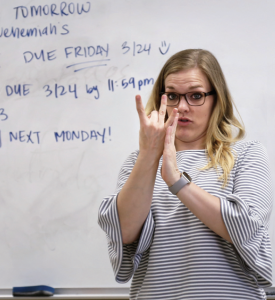
Erin Powell, an ASL interpreter in Atlanta, spent the 2016-2017 academic
year commuting to Tuscaloosa to teach Honors ASL.
In Powell’s classroom, the space for a student’s thoughts is not in their minds or on the tips of their tongues, but in front of their bodies. Claiming the area in front of them as their linguistic canvas, students fill the space with words that dance across their hands, reaching the eyes of classmates which are alert and bright with understanding. As their hands move, so do their faces; adding inflection with the raise and furrow of the brow, and meaning with the purse and relaxation of the mouth. For many of her students, this is the first time they’ve been truly forced to “show” and not “tell,” as they work to master a visual language.
In Powell’s classroom, students learn not with a weakness of the ear, but with a strength of the eye.
One student with that strength is Ben Klein.
For Klein, a graduate of ASL I, ASL II, and the current president of DHS, ASL has been more than a skill for the present – it is a key to his future. A senior criminal justice major, Klein hopes to work in law enforcement and knew that learning ASL would help him communicate with Deaf members of his community.
“If I’m not able to at least be plugged into the subsects of my community, then how could I possibly want to police that community?” Klein asked.
A proud man in brown, Klein works as a reserve deputy in Blount County. This summer he responded to a call at the home of a Deaf man. Other officers have interacted with the man in the past, and the calls would take around an hour, writing back and forth on a piece of paper. From what he learned in ASL I and II, Klein could successfully communicate with the man and resolve the situation – in a quarter of the time.
Klein bucks the notion that ASL only benefits communicative disorders or education majors, saying that if a student plans to do anything that involves people – “which is basically just living!”– ASL will apply to them.
Schafer agreed, saying that learning ASL can benefit a large array of people – including expectant parents who want to communicate with their babies early on.
Oh, and scuba divers.
“If anyone plans to scuba dive, a full conversation in ASL can be done under water,” Schafer said. “You will not have to wait until you return topside to share every detail you can recall.”
The Honors ASL class, which started as ASL I, was in high demand. In the spring of 2017, an ASL II class was created to accommodate students who wanted to continue, and by the summer of 2017 the class moved to a video conference format so Powell could teach the expanding number of classes several days a week without commuting.
In the fall of 2017, a second ASL class was started in the Critical Languages (CRL) Department, allowing students outside the Honors College access to the language as well. It is taught by Tabitha Venable, a Deaf ASL instructor who is a graduate of Gallaudet university- America’s premier university for the Deaf.
“The increase of the Critical Language Department recognition for ASL has invited several students to attempt signing with me,” Schafer said. “This is a great start.”
A great start indeed, but trailblazers in this fight are pushing the university to go farther.
“We started really strongly,” Wu said. “But there’s a long way we could go to make this bigger.”
Those involved with the class hope that it will be recognized by the university and the Foreign Language Department as just that: a foreign language. Though the process to make ASL a foreign language at the university is a lengthy one, it is one that many schools have taken on and it is one that would benefit students by giving them the opportunity to earn foreign language credit for taking ASL.
“It is a full language,” Griffin said “It has every element of language, every element of grammar. Even though it is used domestically, it is still foreign.”
Once in the Foreign Language Department, Klein said he hopes to see an increase in the number of ASL classes offered, as well as the start of a Deaf studies or ASL minor.
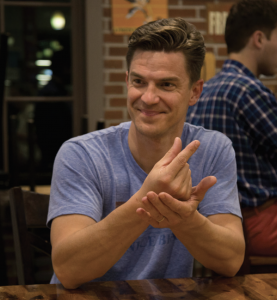
UA professor Dr. Darrin Griffin signs with students during Deaf Coffee.
“The ultimate fantasy would be to have an interpreting program [at UA],” Klein said, thinking about the future. “But that’s like part of a strategic 20-year plan.”
It is possible that plan will come to fruition sooner than expected. As Mitchell explained, just an ASL class always felt like a far-off dream, something that “couldn’t be feasible” in her time at college. But time does not seem to be a challenge for the players in this story. In just a year and a half, members of the university community were able to unite and begin a class that is already making waves within The University of Alabama community.
Waves that have allowed a final player to enter this story: The student sitting in Honors ASL, learning to sign a phrase that is taught in the first few weeks of class.
“I learn ASL – ‘here,’” they sign proudly, their hands out, palms up, moving circularly, “ – at The University of Alabama.”
Editor’s note: There are two types of d/Deaf. “Big D Deaf ” refers to someone or something that is ingrained in Deaf culture and has a strong Deaf identity, including use of ASL. “Little d deaf ” refers to someone who sees their deafness as a medical condition, and not as part of their identity.

